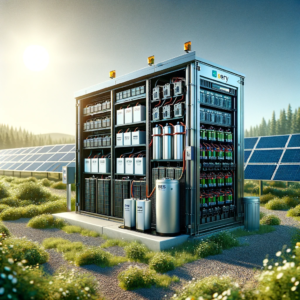Battery Energy Storage Systems (BESS) have emerged as a cutting-edge solution in the realm of sustainable energy management, addressing a spectrum of needs ranging from personal consumption to large-scale industrial applications. This article focuses on introducing BESS, exploring its types, applications, and the economic and environmental impacts that define its significance in today’s energy landscape.
Battery Energy Storage Systems, or BESS, play a crucial role in the ongoing transition towards more sustainable and resilient energy systems. Storing electrical energy for later use, BESS provides flexibility and reliability in energy supply, particularly in areas with limited or delayed access to traditional utility services. This section sets the stage for a deeper dive into the various facets of BESS technology.
BESS technology encompasses different battery types, each offering unique advantages. From the affordability of Lead-Acid Batteries to the efficiency of Lithium-Ion Batteries and the advanced features of Lithium Iron Phosphate (LiFePO4) Batteries, the article explores the characteristics of each. Additionally, it touches on the role of Flow Batteries, specifically the Vanadium redox flow battery, in large-scale energy storage.

Types of BESS
- Lead-Acid Batteries: Widely used for their affordability, these batteries are suitable for deep-cycle applications but have limitations in lifespan and cycle counts.
- Lithium-Ion Batteries: Known for their efficiency, these batteries offer a lightweight solution with a longer lifespan, although they come at a higher cost.
- Lithium Iron Phosphate (LiFePO4) Batteries: These represent an advanced segment in battery technology, known for their superior performance, longevity, and safety.
- Flow Batteries: Ideal for large-scale storage, flow batteries can store substantial energy amounts but are more expensive, with the Vanadium redox flow battery being a notable example.
Stay tuned for the next part of this series, where we explore the versatile applications of BESS and delve into its benefits.
